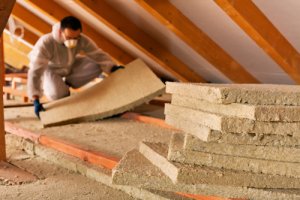There’s no denying that in the current climate property development can yield some pretty high gains. Being able to buy a property at a reasonable price, make improvements and then sell it on at a higher price has made a rate of return unmatched by any interest rate. The problem is that compared to perhaps 30 years ago, the average house price has risen around 100% with wages only increasing at a fraction of this.
This has meant that the number of people able to invest in property “fixer-uppers” has been reduced and with the current housing demand, the mere notion of finding a bargain is becoming less and less of a reality. Indeed with property commanding such a premium price, the stakes are high for potential investors – if you don’t do things right your property and renovation investment could fail to pay you the dividends it is potentially capable of.
If you are thinking about purchasing a “fixer-upper” investment then make sure you consider the following:
1. Fundamentals Before Fun

As with any large project, a logical strategy is absolutely essential so you need to restrain yourself from going in headfirst into the cosmetic touches and pay attention to the basics. surveyors and buyers will have a vested interest in whether the house is structurally sound, dry, has working circuitry, is plumbed in and does not contain any harmful materials such as asbestos.
A house that has leaks and rising damp but is adorned in Graham & Brown wallpaper and mahogany flooring will not sell and will not yield returns. Anyone developing a property should start by getting a reliable damp survey and structural check to and make sure that the fundamental building blocks are reliable before allocating any budget to other things.
2. Be Generic In Your Decoration

This is one of the most common traps a lot of people fall into when starting their renovation journey. The excitement of having a project where one is in charge of the design and creative direction can get the better of us but the crucial thing that any would-be renovator needs to remember is that it is strictly a business project. To that end, personal preferences relating to decor, style and character need to be cast aside.
When selling on a property you don’t know who the buyer will be or what their preference is when it comes to decor so keep it simple and don’t pigeonhole a specific style that may reduce your chances of enticing a buyer. You should look at the area and establish who your potential buyer is likely to be. For example: a four-bedroom house in a suburban part of town in close proximity to schools is a prime target for a young family. They will want a sturdy, practical house that can take the weekly bruising of busy family life and children as opposed to something ornately decorated and easily soilable.
3. Pay Attention To Insulation
 Energy efficiency is a big deal in today’s housing market because buyers are wary about how much it will cost to run the house in terms of utilities on a daily basis. Houses with high energy efficiency are more attractive than those without. EPCs (energy performance certificates) provide a breakdown of a property’s energy efficiency and are provided by a seller to prospective buyers (this has been mandatory since 2008).
Energy efficiency is a big deal in today’s housing market because buyers are wary about how much it will cost to run the house in terms of utilities on a daily basis. Houses with high energy efficiency are more attractive than those without. EPCs (energy performance certificates) provide a breakdown of a property’s energy efficiency and are provided by a seller to prospective buyers (this has been mandatory since 2008).
Be sure to check floorboards, window frames, the roof and any other locations that may be letting in drafts and seal them. This can be done quite cost-effectively using draft strips and off-the-shelf sealant. If the property is losing a lot of heat from its windows then you should also consider double glazing or other improvements if it is a period property.
For more information on damp proofing and pre-purchase surveys, visit our website and make an enquiry
